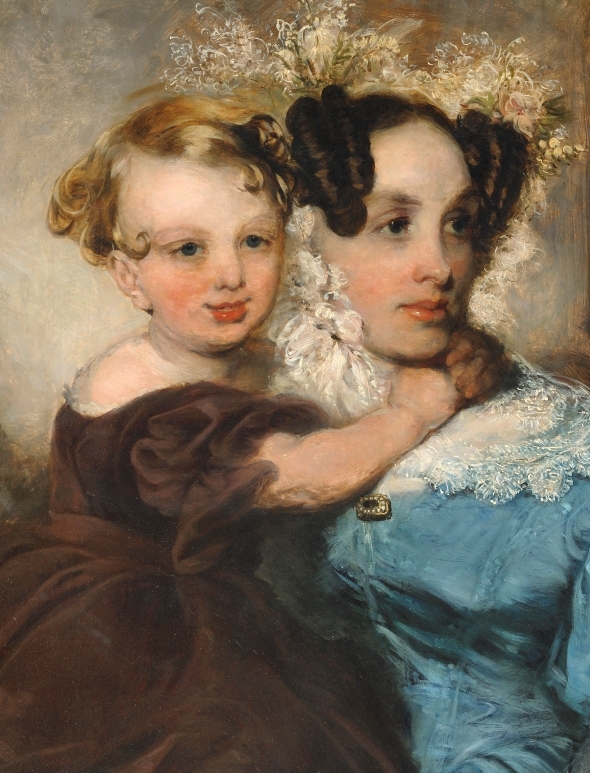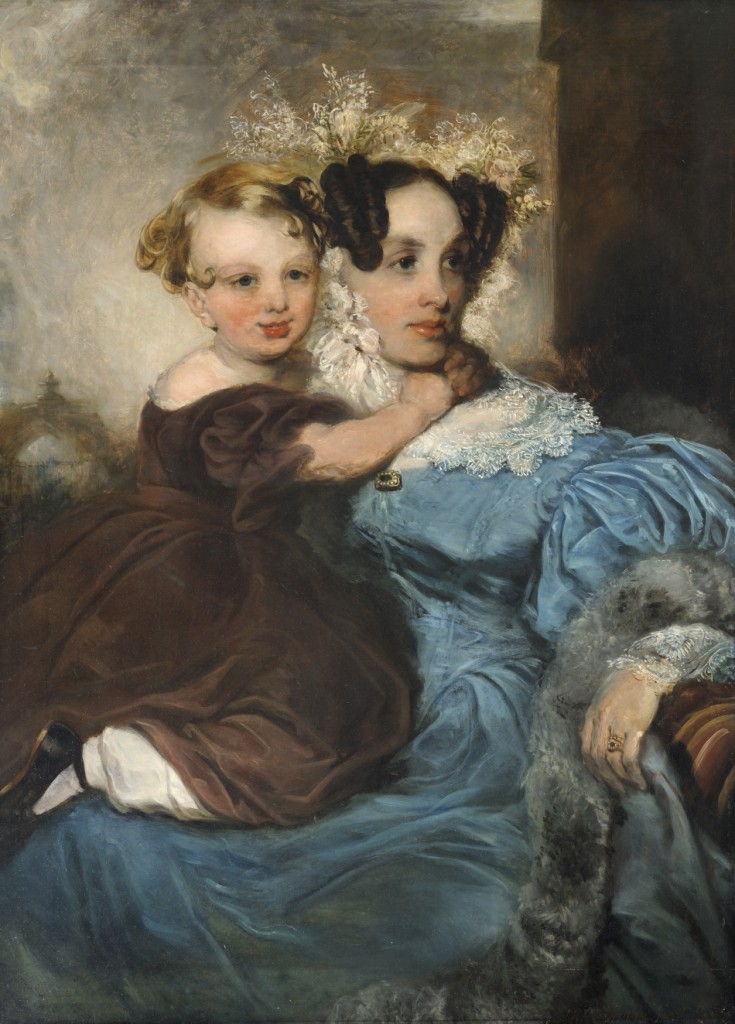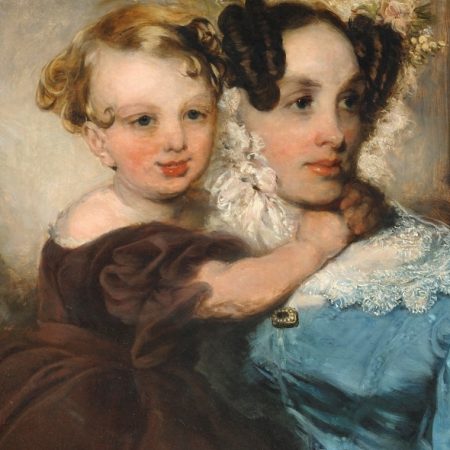Seeking advice on portrait dating and costume

called Portrait of Mrs Mary Linsdell (b1805) and her daughter Annie (b1841) (detail) by John Robert Wildman (1788—1843) © Valence House Museum
A query from Valence House Museum:
This portrait is described as Mrs Mary Linsdell (b.1805) and her daughter Annie (b.1841) and was donated in 1942 by Annie’s son-in-law. Annie was the fifth child and third daughter of Mary and her husband Thomas. The portrait is by John Robert Wildman – portrait, landscape, historical and animal artist – of London.
We are now starting to question whether the child shown is actually Annie. Wildman stopped painting in 1842 following the sudden death of his wife. If it is Annie in the painting, she would have actually been just a few months old when it was completed (having been born late 1841). This clearly doesn’t fit.
We know there is a companion portrait to this showing Thomas Linsdell and their first daughter Mary, by Margaret Sarah Carpenter. Why would the Linsdell’s choose to have their first child included in the portrait of Thomas and the fifth child included in the portrait with Mary when children two-to-four all survived to adulthood? We now suspect that our portrait shows their second child and first son, Thomas (b.1835).
We would like to know:
- Are the costumes shown in our portrait consistent with those from around 1837?
- Could the child shown be a boy, dressed in normal pre-breeching gown of the period?
Please use the ‘add a comment’ facility on this page to respond to this query.



Comments
Hello, I would say the dress was closer to c 1830 than 1837. The very full sleeves were at their height of fashion at this time and were much less full by 1837.
I would say this was a young boy.
Hope that helps. Meg
You might like to see the following on Art Detective where the questions you pose were dealt with very thoroughly in a wide ranging discussion last autumn:
http://www.thepcf.org.uk/artdetective/discussions/discussions/can-these-costumes-confirm-which-child-of-mary-linsdell-is-depicted/status/completed
I hope this helps.
Having specialised in portraits for over 30 years now I can confirm that in my opinion the dress is definitely in keeping with circa 1837 and that the sitter is likely to be a boy, it was common for boys to be depicted in dresses up until 12 years or age or so – quite often sitters had long hair too.
Hello, it is very likely that the portrait is from 1835. As others have said, women’s sleeves were at their largest that year and then suddenly deflated. I am quite sure the portrait would have been done before 1837, when big sleeves were out of fashion. I’d suggest having a look at dated portraits of women on the NPG website between 1834 and 1837 to get an idea of what’s happening with the sleeves and the waist (going from straight to pointed), they are the key elements. At the NPG there’s a nice drawing of Anna Eliza Bray which is similar, dress and hairstyle-wise, from 1834. Looking at images of the young Princess Victoria might also help. The child can definitely be a boy, we have a similar outfit on display: http://collections.museumoflondon.org.uk/online/object/755214.html . I love this period, so please get in touch if you need more information. Beatrice
it’s a boy, his hair has a side parting whereas girls had centre partings to help with future hairstyles. See https://www.royalcollection.org.uk/collection/405413/the-royal-family-in-1846
His hair is quite boyish, rather than pretty.
He is, possibly a left-handed boy- (rt-handed males ‘push’ hair from eyes with left, spare hand, girls vice-versa- ‘pull’ or ‘draw’ hair from eyes with ‘spare’ hand..) the deep ‘V’-fronted bodice of Mary’s dress dates before 1840, when horizontal ‘bands’ the trend. Exceptional portraitist.